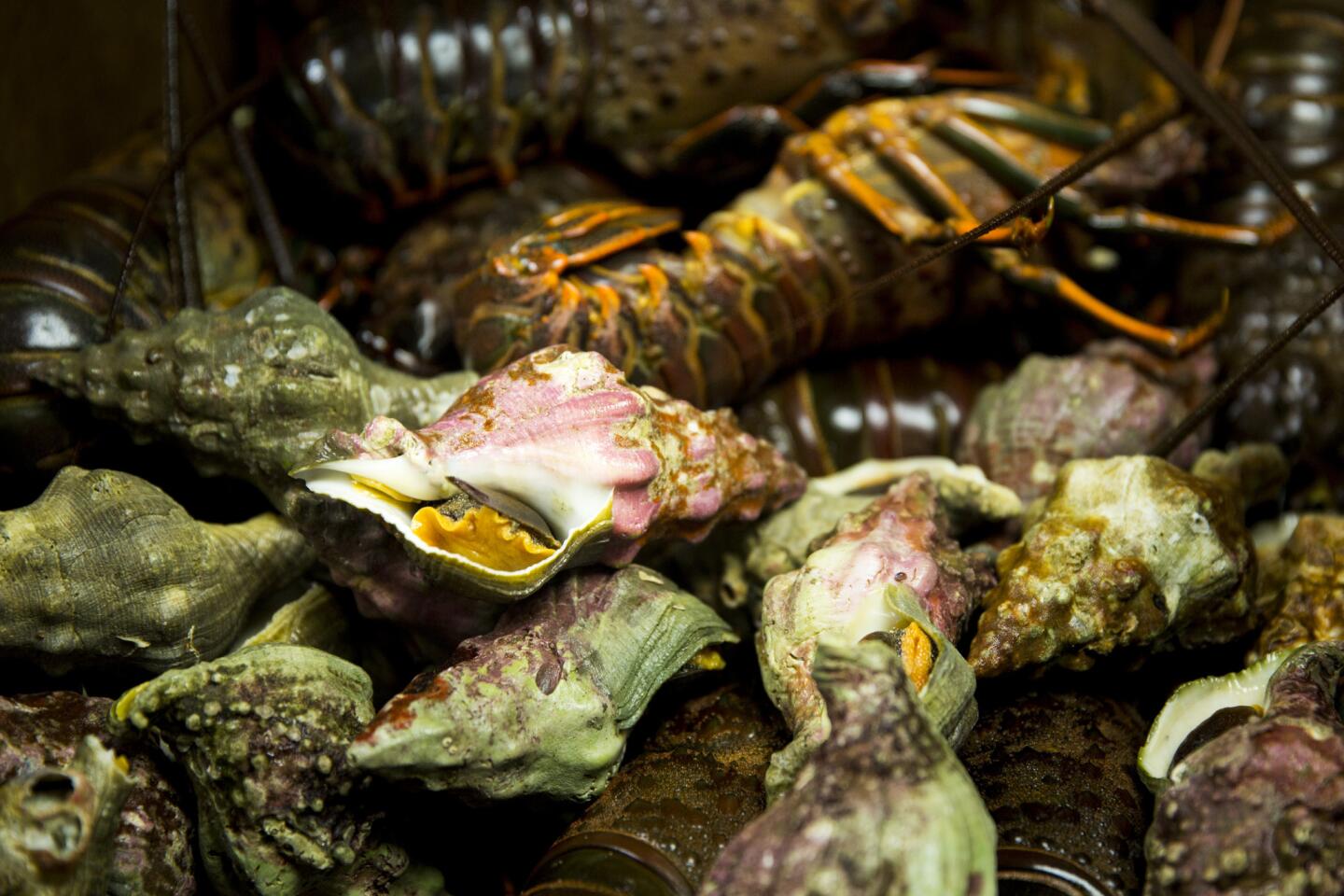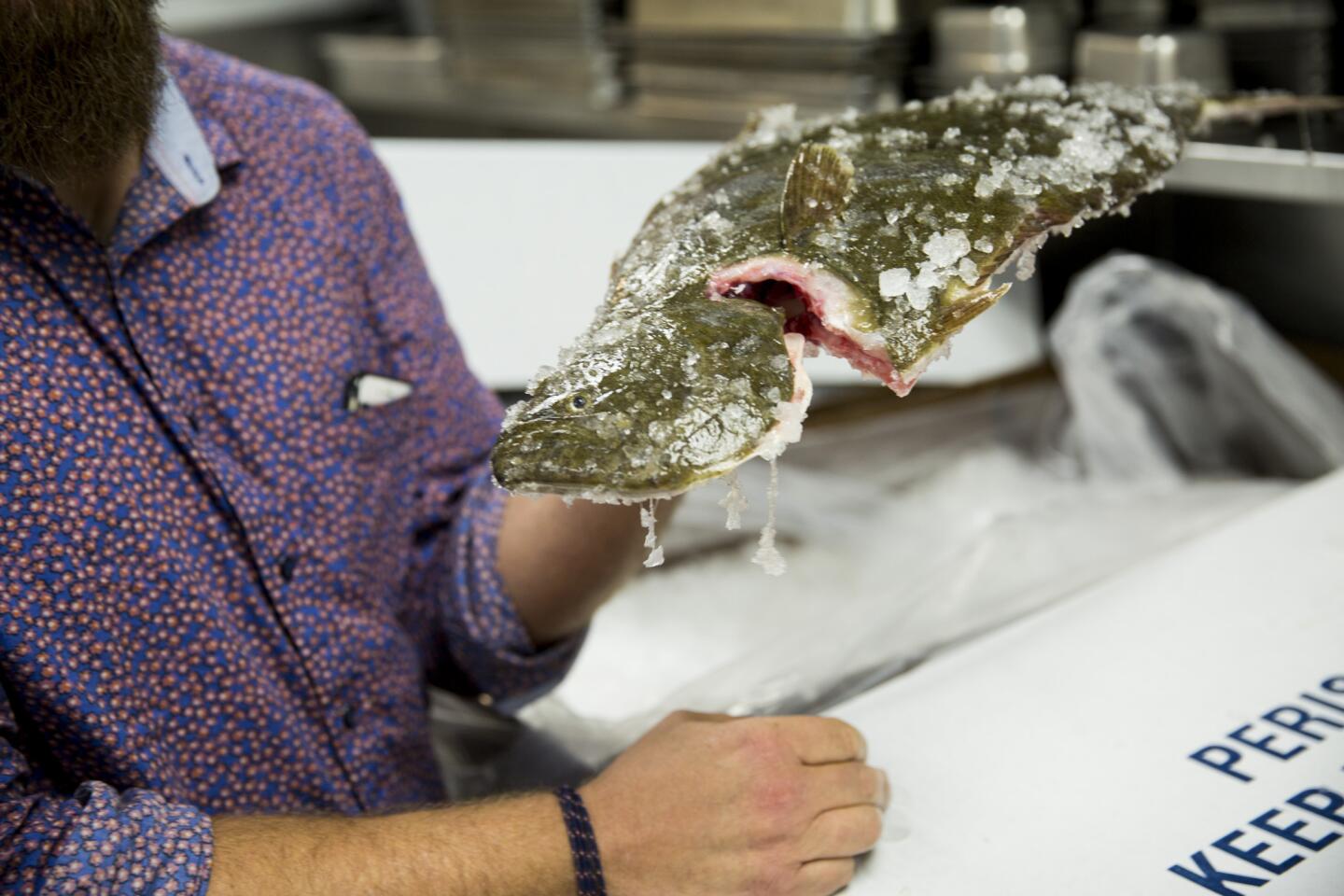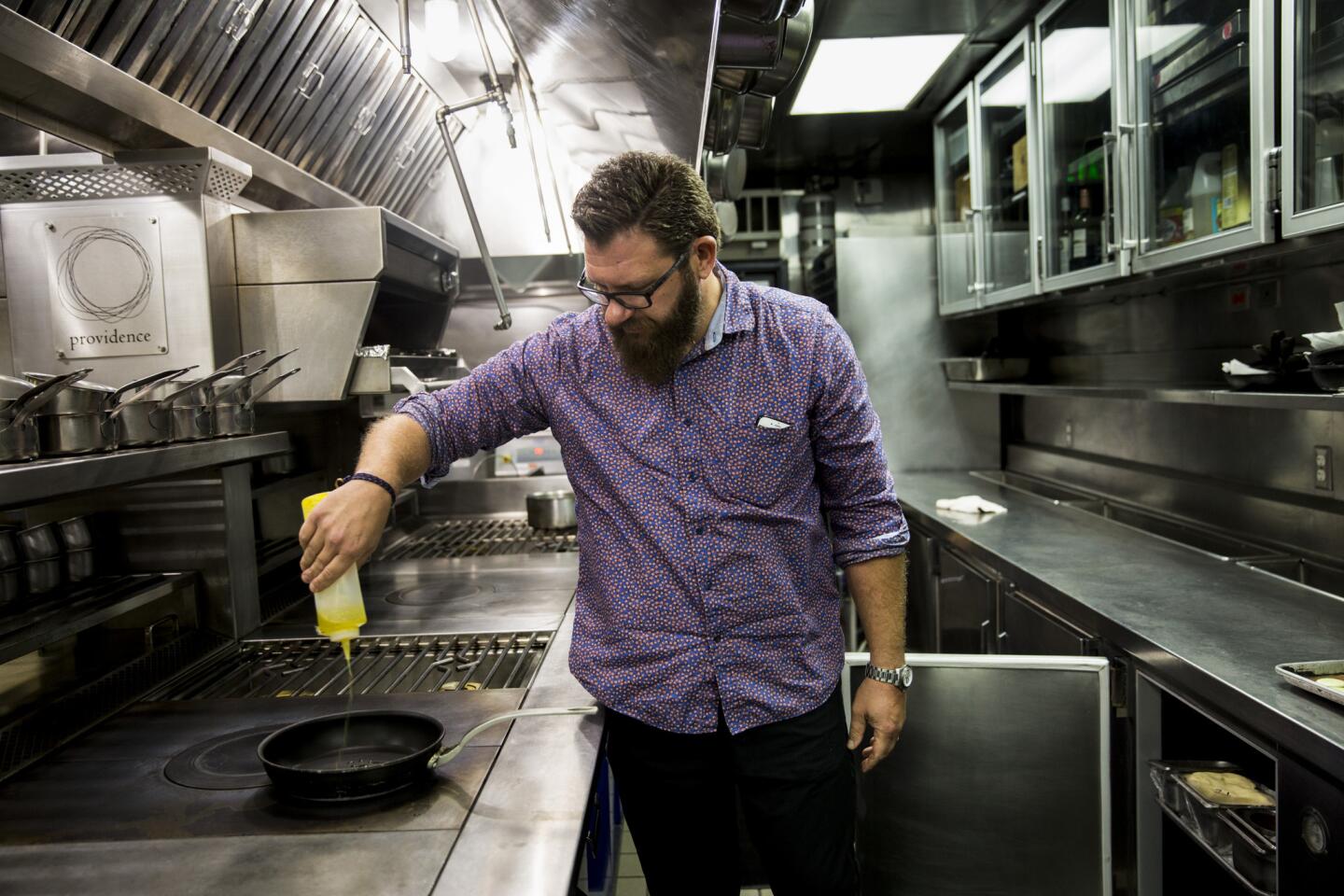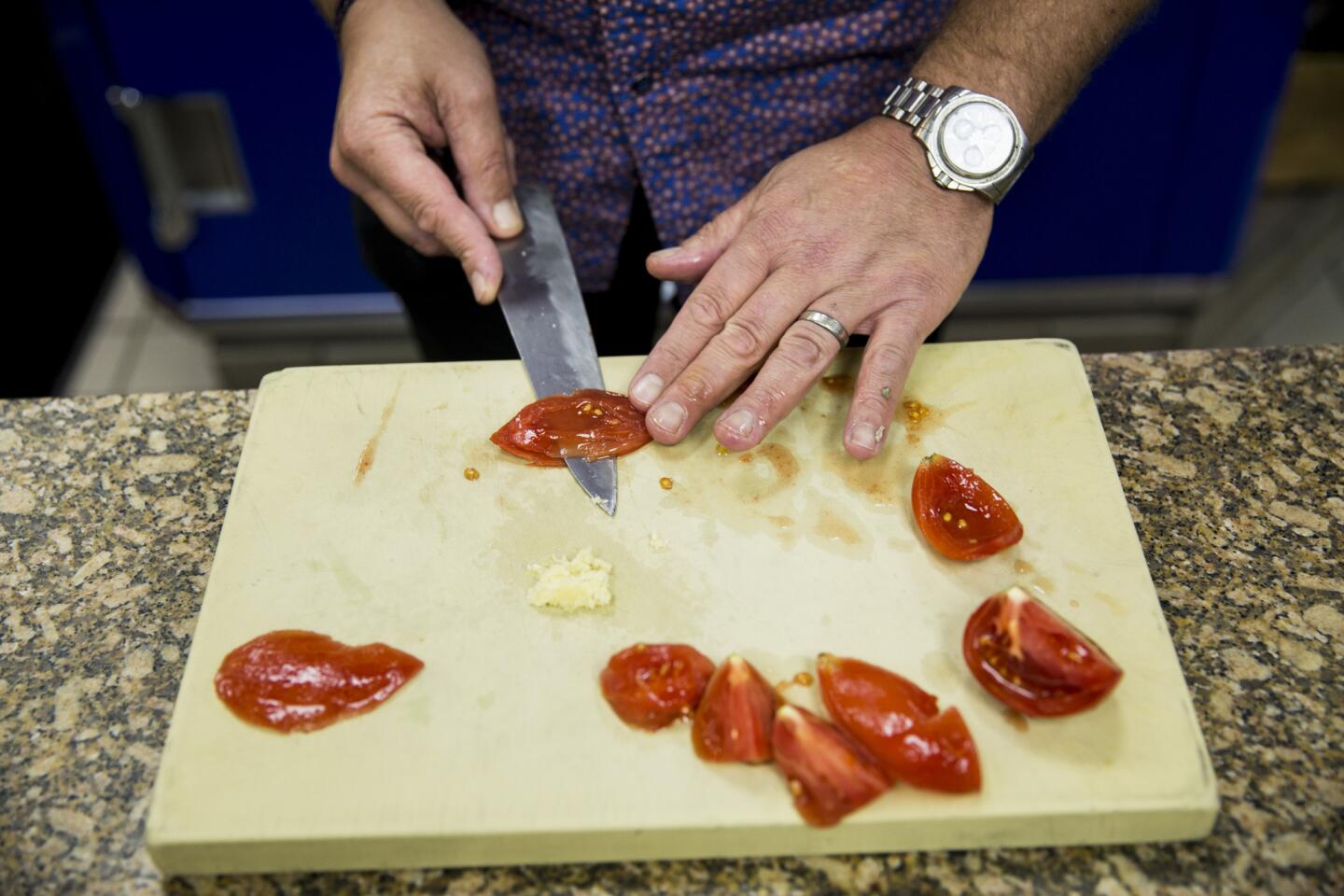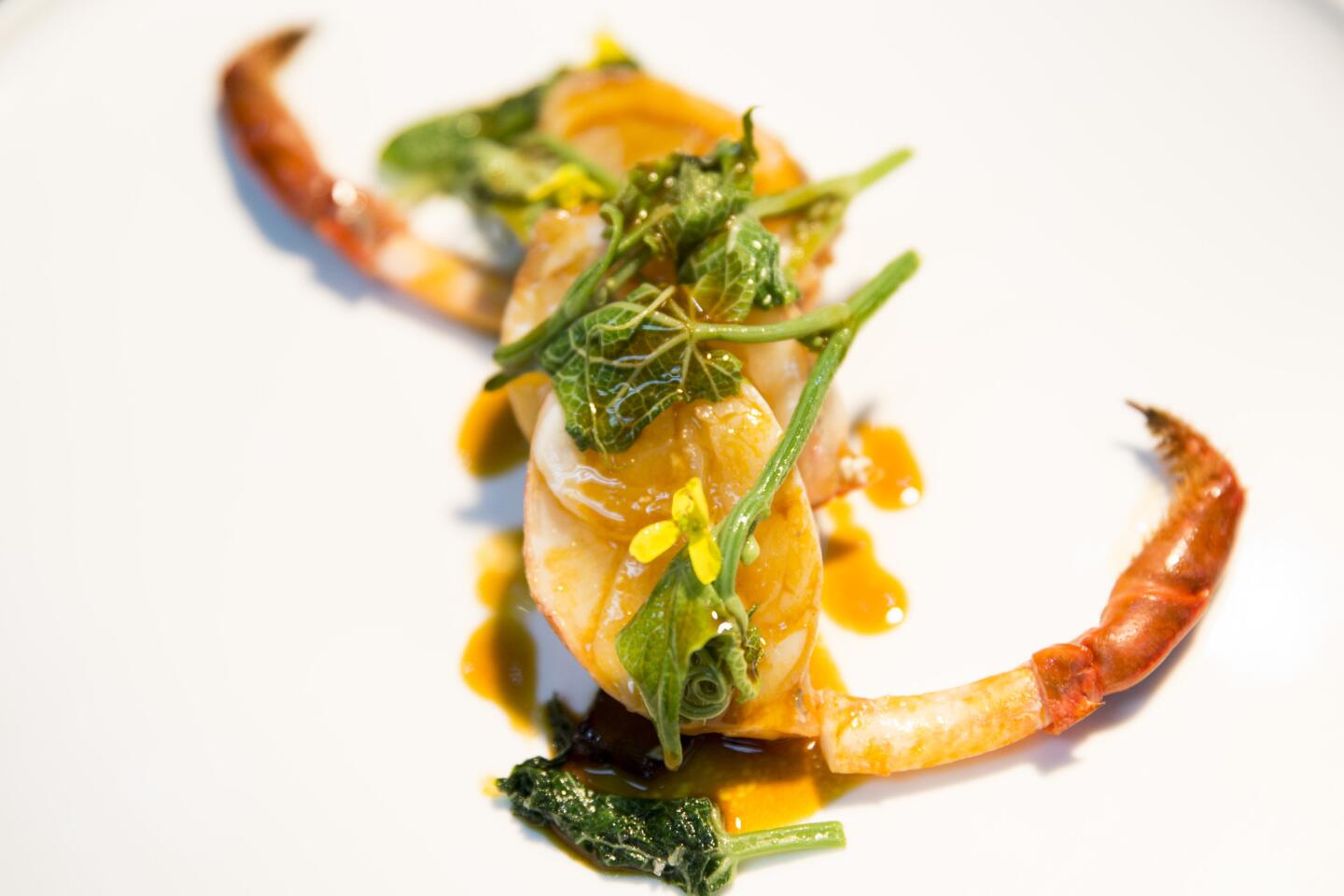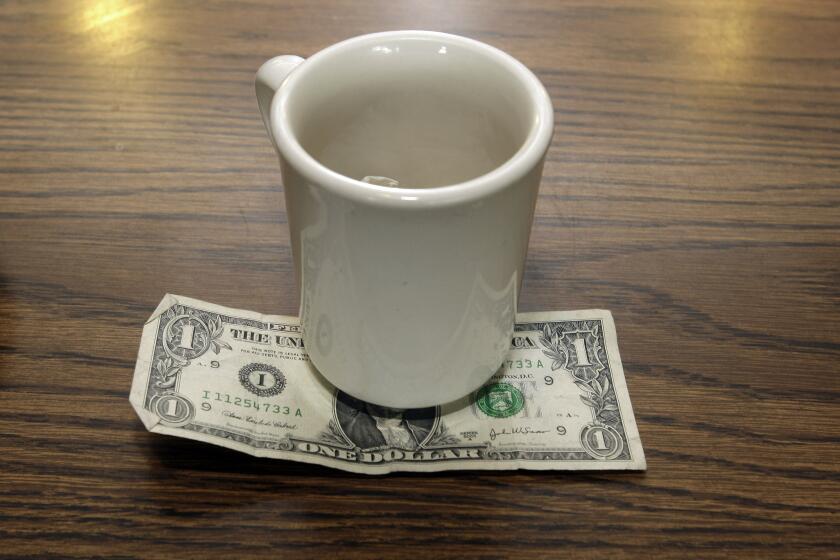How L.A.’s number one restaurant is using a sustainable seafood delivery service
- Share via
Every Tuesday night for the last two months, Providence chef Michael Cimarusti has been anxiously checking his phone for emails. He hasn’t been looking for sports scores; he’s been trying to figure out what he’d be serving the next night. Cimarusti has been playing an elevated version of that old Mystery Box game. The next night’s menu at his restaurant — just named the best in Southern California for the third year in a row by our restaurant critic Jonathan Gold — might have been based on pristine white sea bass or it might have been nothing but sea cucumbers.
It’s all part of an experiment in tightening the connection between fishermen and chefs called Dock to Dish, in which Providence pays a $750 a week subscription and is guaranteed at least 75 pounds of seafood every week caught by 16 small fishermen in the Santa Barbara area. And then Cimarusti and his staff wait to see what the fishermen bring in.
SIGN UP for the free In the Kitchen newsletter >>
“It definitely forces us out of our comfort zone,” says Cimarusti, whose seafood-based restaurant is regarded as one of the best in the country. “We get lots of things we might not ordinarily have ordered, and then we have to find out how to use them the best way.
“It’s an interesting process because it’s supply-based, not demand-based. We’re not calling in an order. They are going out foraging on the docks in Santa Barbara and finding what they can get that’s the cream of the catch to bring to us. Then it’s up to us to figure out what to do with it.”
One Wednesday morning in late October, the delivery consisted of 12 pounds of halibut, 10 pounds of whelks, 40 pounds of spiny lobster, 70 pounds of ridgeback shrimp and 17 pounds of lingcod. It is definitely a gamble, though. The next week that lobster bonanza was replaced by 50 pounds of fist-sized turban snails — which even 12 hours of simmering had only begun to tenderize. Still, Cimarusti says he has found a way to use everything he’s gotten.
“We purposely leave holes in our menu to accommodate whatever items we get,” he says. “But we usually don’t find out until about 10:30 or so the night before, so I probably check my emails like 20 times during service trying to find out what we are going to get.”
ALSO: Jonathan Gold’s 101 best L.A.-area restaurants of 2015
Dock to Dish was started on the East Coast by fisherman Sean Barrett and chef Dan Barber, and now 15 New York restaurants are members. It came west thanks to Sarah Rathbone, co-founder of Community Seafood, which sells the same kind of locally caught, small-boat fish and shellfish at farmers markets and through a home cook’s subscription program.
Its goal goes far beyond just playing Stump the Chef. That weekly subscription gives these small fishermen a solid economic basis from which to work. It offers a chance to give a little fine-dining exposure to what are often otherwise wallflower fish. And it connects restaurant kitchens even more closely with the sources of their ingredients.
In addition to each seafood delivery — and almost as important — is the email the night before, which not only explains what fish is coming in, but who caught it, where and how. So, for example, Cimarusti’s email that night told him that the halibut had been caught with a rod-and-reel by Morgan Castagnola aboard the Cecelia, and the whelks and lobsters had been caught in traps by Shane Robinson aboard the Miss Conception. It also detailed ocean conditions and some of the work that went into catching the fish.
“These great chefs, they can get whatever they want from anywhere in the world just by picking up the phone and placing an order,” Rathbone says. “That’s how industrialized seafood has always gone. Part of what we offer is an appreciation for the labor that went into catching and preparing the food. As far as our chefs are concerned, the more information the better. The story that comes with the fish is a really important part.”
At first, this year’s Southern California program was supposed to be just a one-month trial with Providence, but it was so successful it was extended, adding Niki Nakayama, who has earned high praise for the California-influenced kaiseki menus at her restaurant n/naka, including a starring role in an episode of the television series “Chef’s Table.”
Dock to Dish is on hiatus until April or May, when fishermen can get out on the water more reliably than during the stormy winter months.
“It’s really opened my eyes to just how wonderful some of these fish can be when they’re properly handled,” Cimarusti says. “I think before this model, a lot of the local fish wasn’t treated with the reverence it was due and it couldn’t command very high prices. This model is changing things.”
::
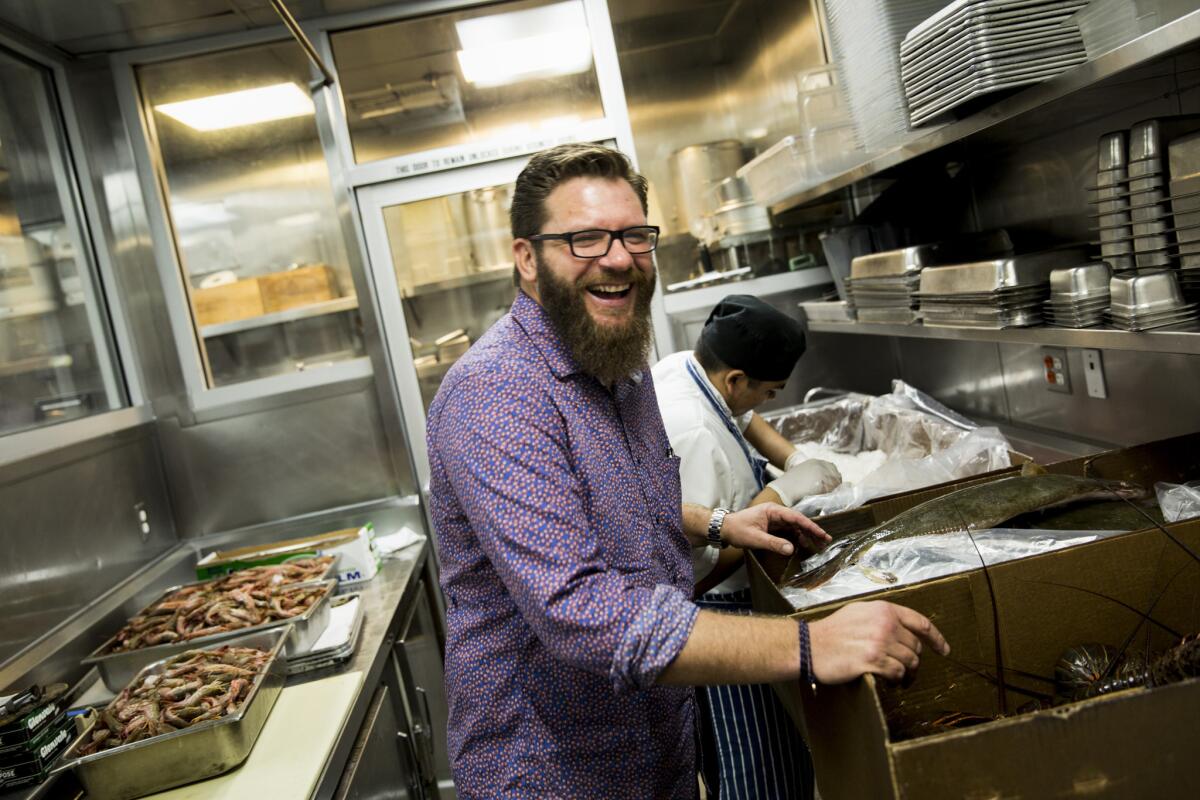
White sea bass or sea cucumbers — somehow Michael Cimarusti has to transform whatever Dock to Dish delivers into a creation worthy of Providence, his fine-dining restaurant. So what did he do with one typical shipment?
Halibut
California halibut is a tricky fish to cook, Cimarusti says. “It’s much more temperamental than Alaskan.” He gently pan-roasted the whole loins in brown butter, then sliced them to order and served them with matsutake mushrooms, some braised and some raw. Cimarusti says that in winter he likes to make halibut broth — grilling the bones, then smoking them and finally simmering them in a pot with kombu. He finishes it with a little bit of good butter. “It’s such a nice, comforting thing to start a meal.”
Whelks
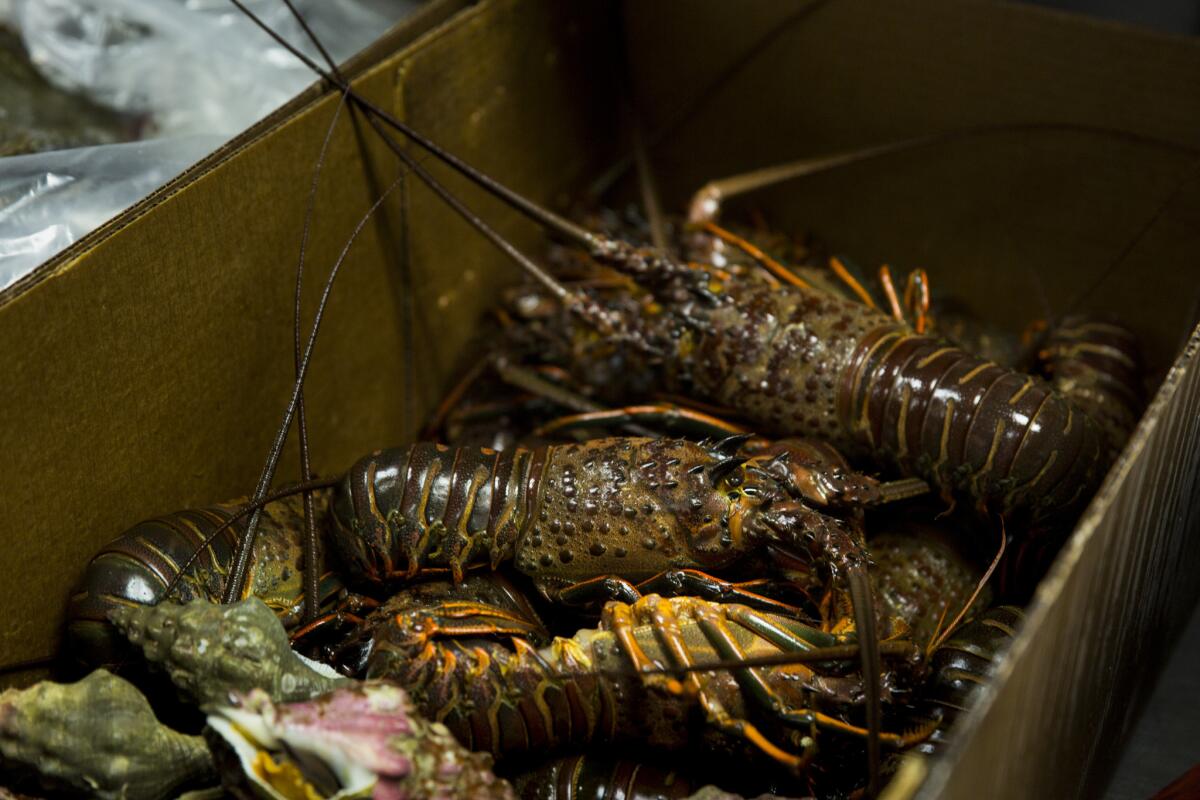
Fortunately, Cimarusti has a standing dish on the menu called “The Ugly Bunch” made up of assorted delicious but unlovely shellfish, served with a smoked crème fraîche panna cotta. He blanches the whelks in their shell until tender, then removes the meat. He saves the liver but cuts away a little strip of tough flesh that is incredibly bitter. Then he sous-vides them with dashi overnight. “They come out incredibly tender and delicious.”
Ridgeback shrimp
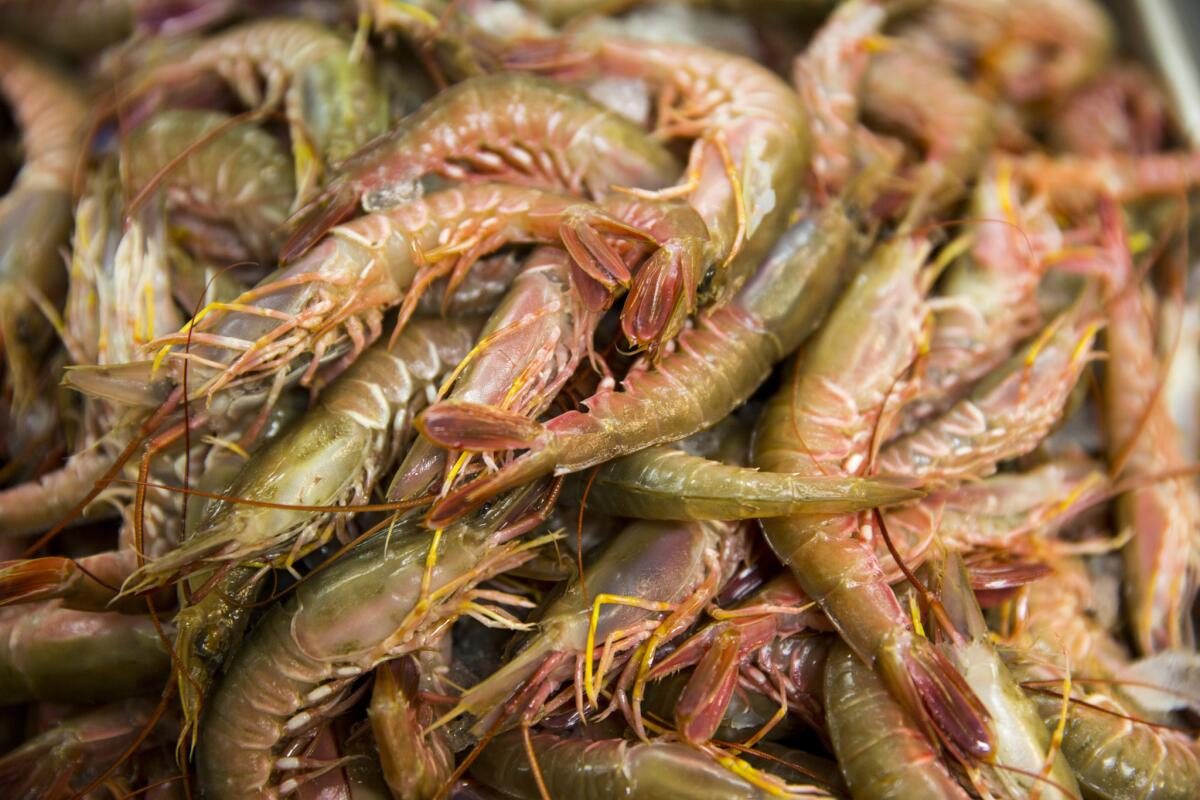
At Providence, these sweet little shrimp are shelled raw, quickly sauteed with herbs and butter and then served with a medley of farmers market vegetables. Many of them go to Connie and Ted’s, Cimarusti’s less formal restaurant, where they are battered and fried as popcorn shrimp and served with a salad.
Lingcod
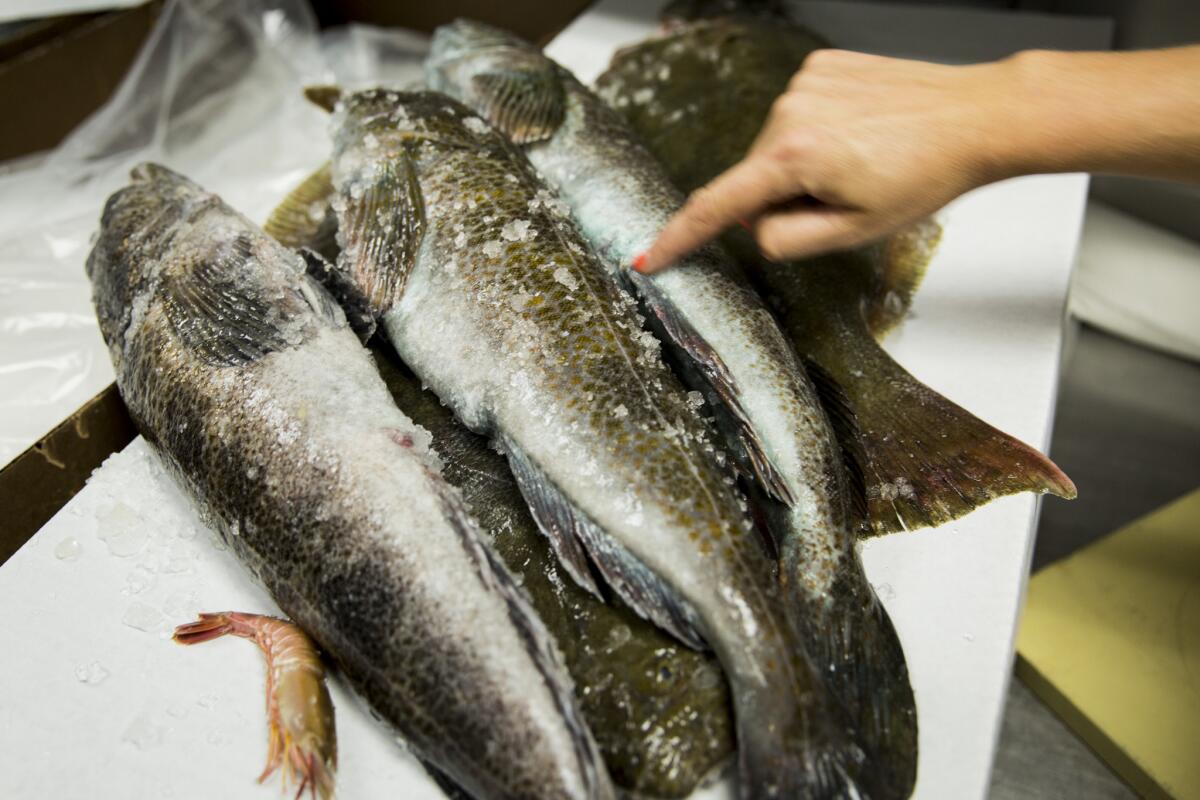
This is a fish Cimarusti says he had never used much before Dock to Dish, but he’s become a fan. “It’s got skin on it almost like the skin on a chicken thigh; it’s really amazing.” He brines the lingcod, then cooks it skin-side down, weighted, in a hot skillet to get the skin crisp. Then he turns the meat over and puts the pan in a warm spot in the kitchen for about 20 minutes before slicing and serving. “It’s been a real revelation to me.”
Spiny lobster
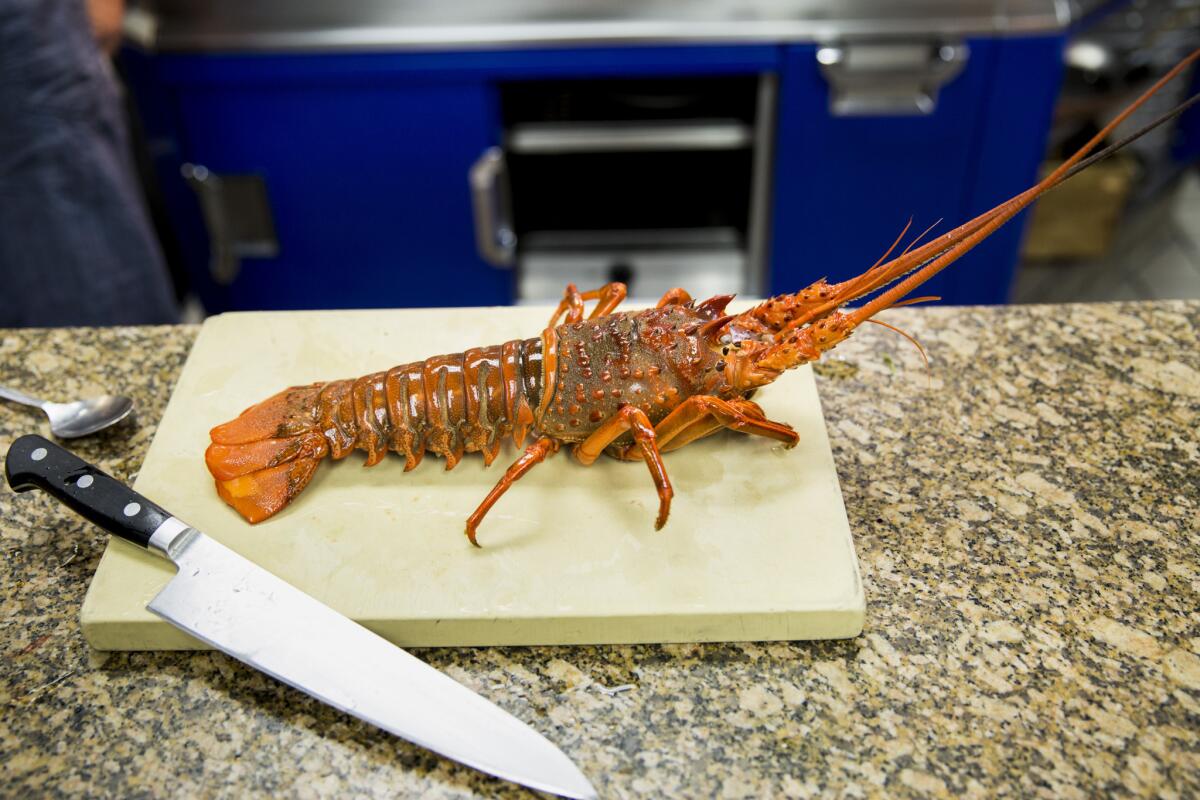
Lobster brings out the technician in Cimarusti. He ties the lobster to a wooden spoon to keep it straight during cooking, then blanches it in a court-bouillon for four minutes until the meat can be easily removed from the shell. He slowly grills a whole Asian eggplant over smokeless binchotan charcoal until it’s soft enough to peel. He cuts the peeled eggplant in half lengthwise and gently sautes it in olive oil until it’s beautifully browned. The lobster is removed from the shell, brushed with softened butter (“lobsters love butter”) and grilled even more slowly over the same charcoal, to which he’s added some soaked alder chips for smoke, until the tail is golden and just translucent at the center.
After resting to cook through and tenderize, the lobster is sliced into medallions. These are propped atop an eggplant half, which has been sprinkled with smoked sesame seeds (white sesame seeds simmered in soy, then dehydrated). Then Cimarusti garnishes the plate with the greens and tendrils from chayote squash that have been blanched and then sauteed in olive oil. Finally, the dish is finished with a drizzle of reduced lobster jus and a few mustard flowers for color. “We’ll do 40 or 50 portions of this in a night.”
For more information about Community Seafood’s home cooks’ subscription, visit its website at www.communityseafood.com.
More to Read
Eat your way across L.A.
Get our weekly Tasting Notes newsletter for reviews, news and more.
You may occasionally receive promotional content from the Los Angeles Times.
